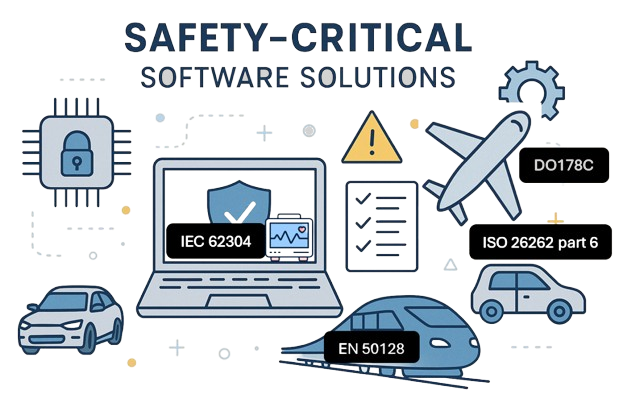Medical Devices (IEC 62304)
IEC 62304 is an international standard that specifies requirements for the software
lifecycle processes of medical device software. It covers aspects like planning, development,
verification, validation, maintenance, and risk management of medical device software.
The standard is recognized by FDA and other regulatory agencies globally.
Here's a more detailed breakdown:
-
IEC 62304 applies to the development and maintenance of medical device software,
whether the software is a medical
device itself or an embedded part of one.
-
The standard aims to provide a common framework for medical device software lifecycle processes,
establish requirements for development and maintenance,
and ensure the safety and reliability of medical device software.
-
IEC 62304 outlines key software development activities, including planning, requirements analysis,
architectural design, detailed design, unit implementation, integration, system testing, and release.
-
The standard emphasizes the importance of risk management, requiring manufacturers
to analyze software for potential hazards, identify software items that could contribute to these hazards,
and document potential causes.
-
IEC 62304 defines various lifecycle processes, including software development planning,
requirements analysis,
software design, implementation,
verification, validation, maintenance, and risk management.
-
The standard is often used to demonstrate compliance with regulatory requirements
in countries like the United States and other international jurisdictions.
-
IEC 62304 also provides guidance on classifying the safety risk of a
medical device based on potential hazards.

